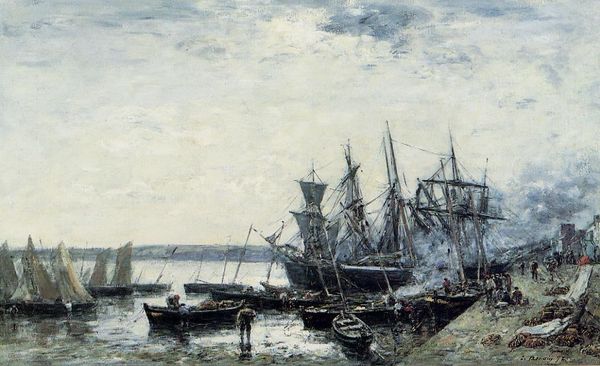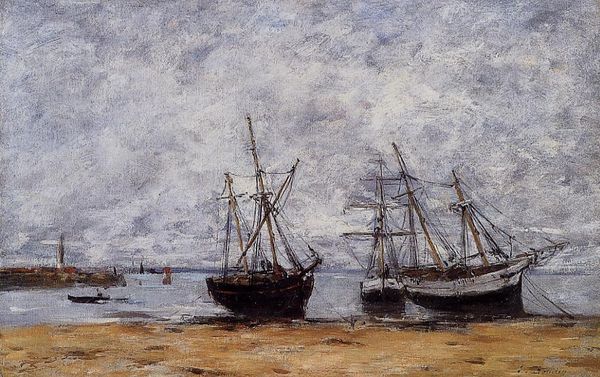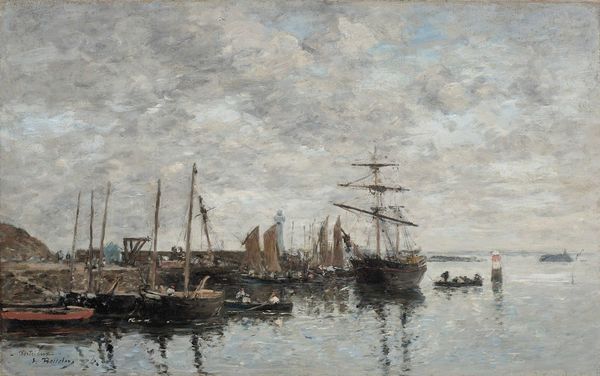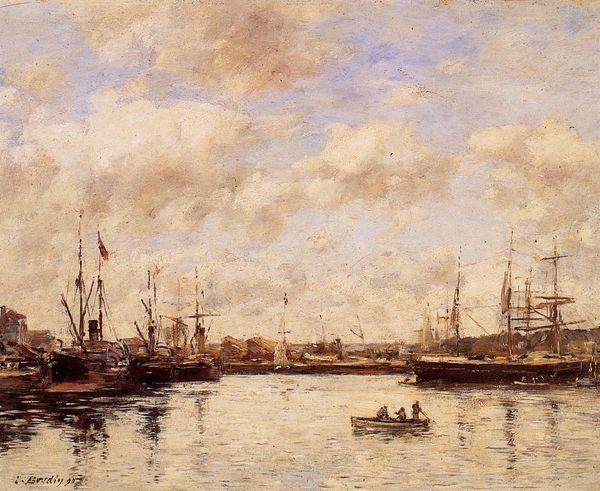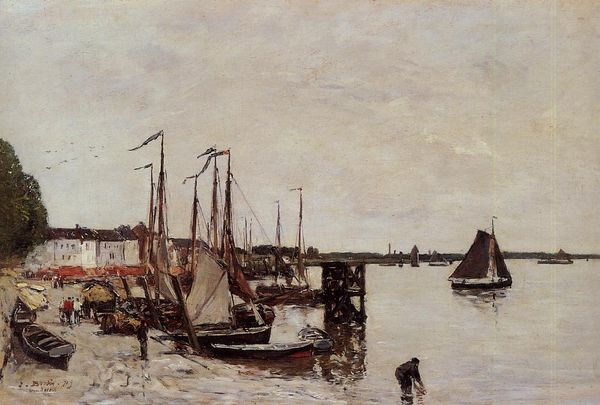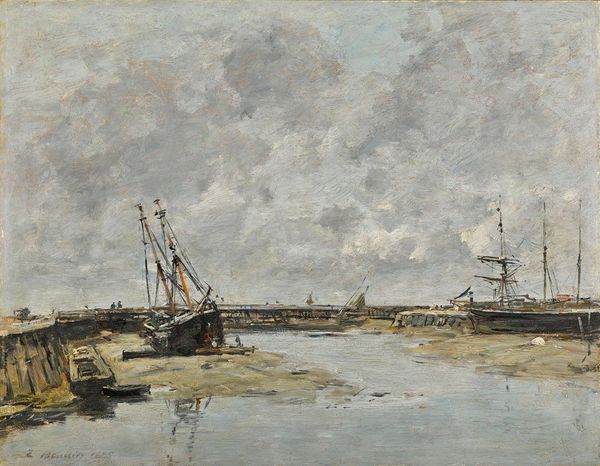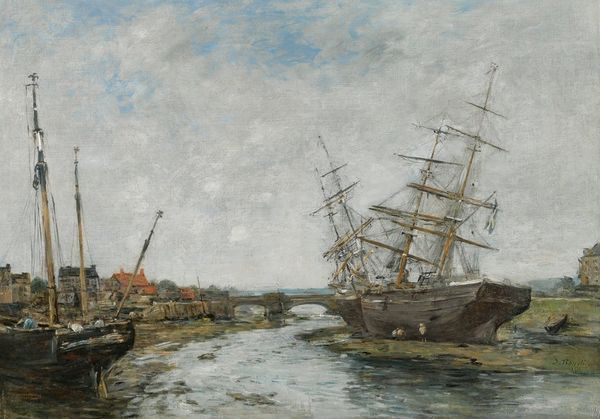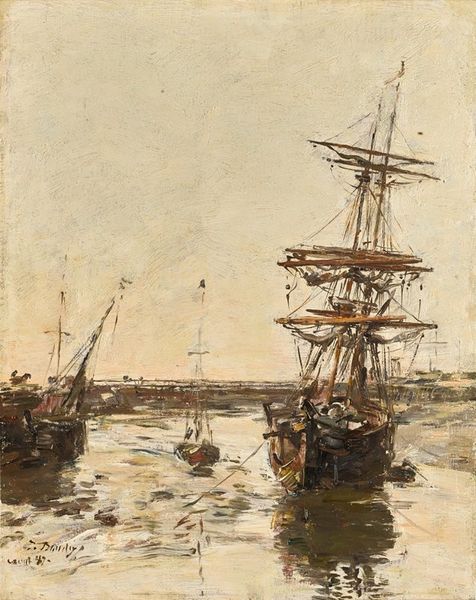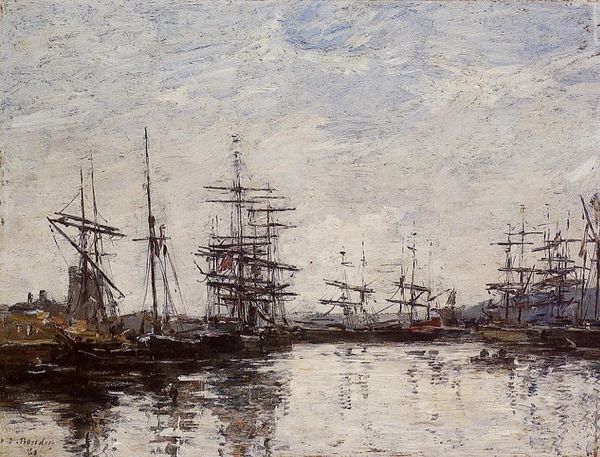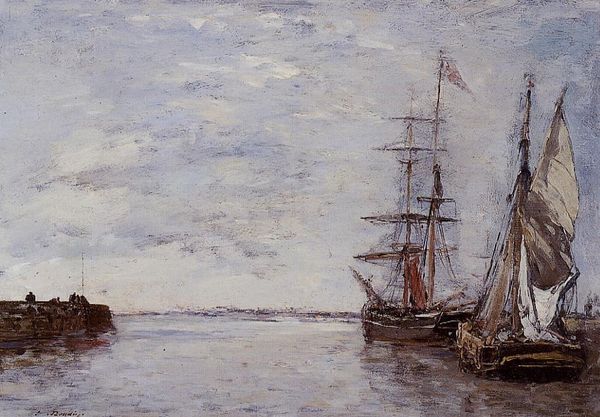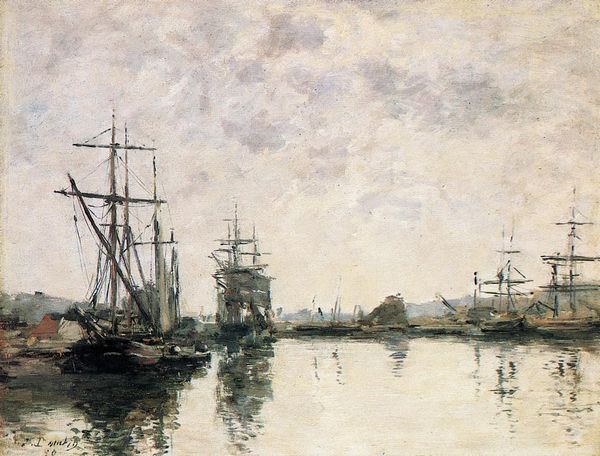
painting, plein-air, oil-paint, impasto
#
ship
#
painting
#
impressionism
#
plein-air
#
oil-paint
#
landscape
#
impressionist landscape
#
oil painting
#
impasto
#
water
#
line
#
cityscape
Copyright: Public domain
Curator: Looking at "Camaret, Fishing Boats at Dock," my immediate reaction is the sheer materiality of the scene—the visible brushstrokes thick with oil paint. Editor: It feels like a rather dreary day in this coastal town. The muted palette really conveys the somber reality of maritime life. Eugéne Boudin painted this cityscape, although its exact date is unknown. Let's explore that. Curator: Exactly! Boudin’s interest lies not in idealizing the scene but documenting the quotidian activities surrounding fishing boats at dock. Note the textures: the rough hulls of the boats created with heavy impasto, contrasted with the smoother depiction of the water. This piece emphasizes labor. We are prompted to consider how maritime activities of fishing and docking defined the lives and work processes of people residing in harbor cities. Editor: Absolutely. These harbors were the epicenters of trade and economic activity. Boudin painted en plein air, capturing the scene's atmospheric conditions on site, reflecting the Impressionist tendencies of documenting the ordinary and changing world. The boats become visual metaphors for labor, connecting this port town to wider political economies across regions and nations. How the harbor enables connectivity, for better or for worse! Curator: I wonder how much access workers or others in the region actually had to artwork such as this. How and where would such pieces have been exhibited, shared, sold, or even acquired at that point in history? The labor of the fishermen made such a place important, and yet there may have been less of a way to contemplate what that meant in a broader cultural context like paintings themselves offered at that time. Editor: That’s an important question. Access was certainly mediated by class and social standing. Boudin gained increasing recognition within established art circles, meaning these harbor scenes circulated among particular audiences within exhibition spaces, in private collections, shaping narratives of coastal life and its economic functions. This in turn helped determine how art historical trajectories around "Impressionism" might continue. Curator: Examining Boudin's methods through material analysis alongside historical context lets us better appreciate how he portrayed work. This pushes our engagement beyond only picturesque scenery or maritime settings and permits a broader discussion about 19th century ports. Editor: A vital lens into not just art, but also the social, economic and historical narratives enmeshed with creative production. It underscores art’s function in mediating and memorializing aspects of culture during its moment.
Comments
No comments
Be the first to comment and join the conversation on the ultimate creative platform.
